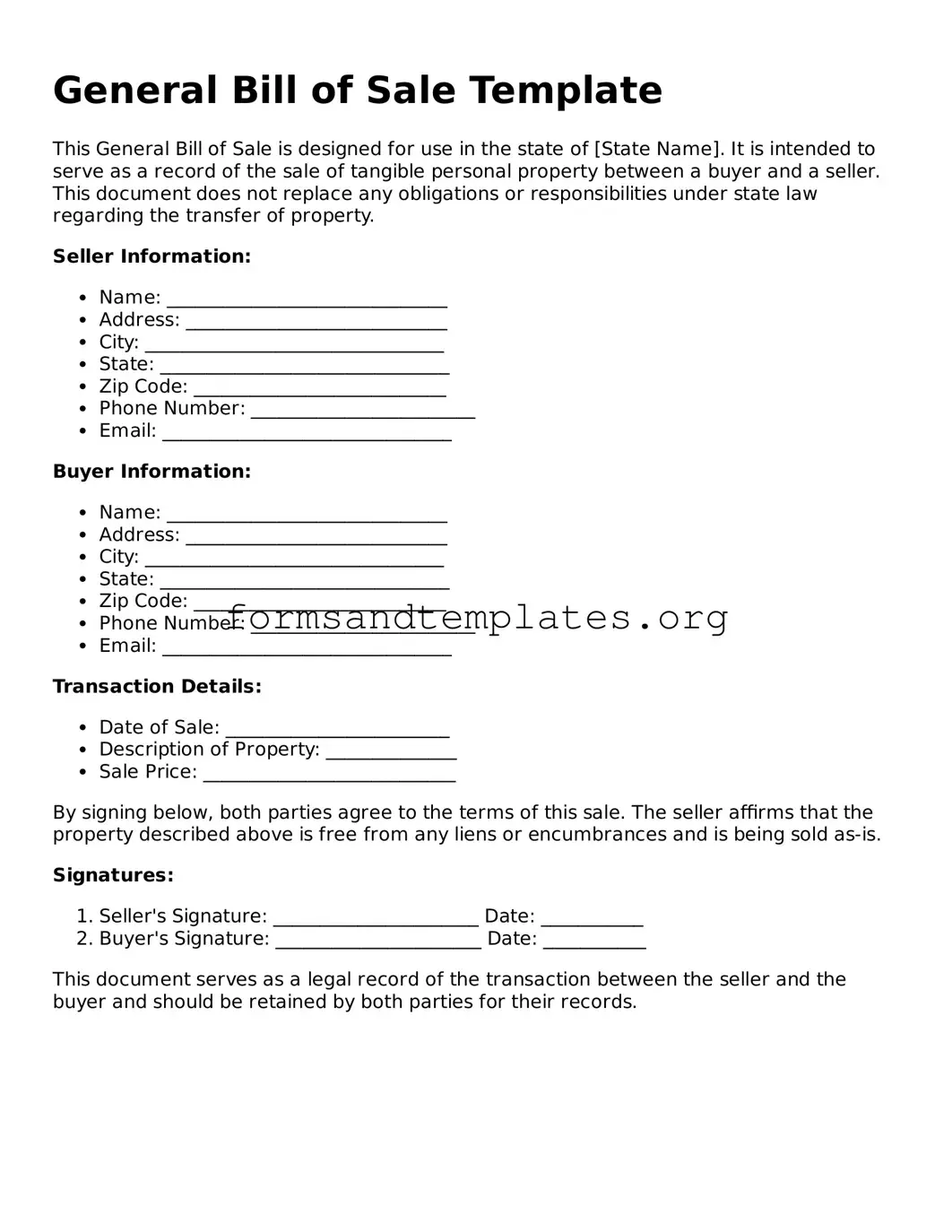General Bill of Sale Template
This General Bill of Sale is designed for use in the state of [State Name]. It is intended to serve as a record of the sale of tangible personal property between a buyer and a seller. This document does not replace any obligations or responsibilities under state law regarding the transfer of property.
Seller Information:
- Name: ______________________________
- Address: ____________________________
- City: ________________________________
- State: _______________________________
- Zip Code: ___________________________
- Phone Number: ________________________
- Email: _______________________________
Buyer Information:
- Name: ______________________________
- Address: ____________________________
- City: ________________________________
- State: _______________________________
- Zip Code: ___________________________
- Phone Number: ________________________
- Email: _______________________________
Transaction Details:
- Date of Sale: ________________________
- Description of Property: ______________
- Sale Price: ___________________________
By signing below, both parties agree to the terms of this sale. The seller affirms that the property described above is free from any liens or encumbrances and is being sold as-is.
Signatures:
- Seller's Signature: ______________________ Date: ___________
- Buyer's Signature: ______________________ Date: ___________
This document serves as a legal record of the transaction between the seller and the buyer and should be retained by both parties for their records.
